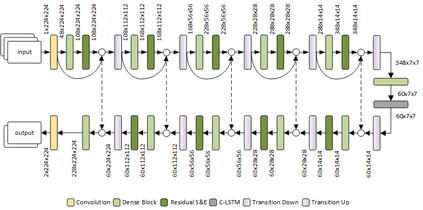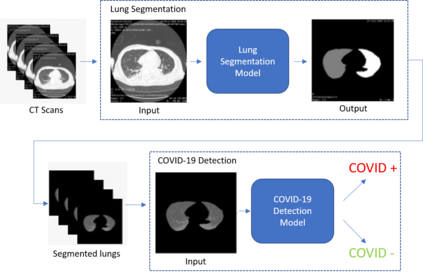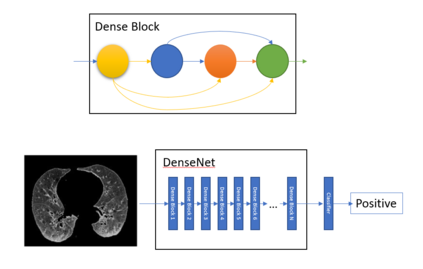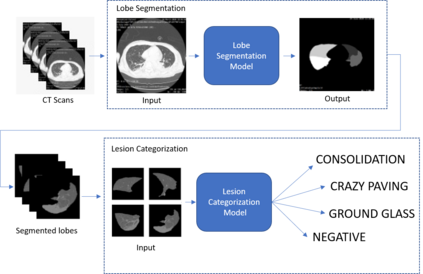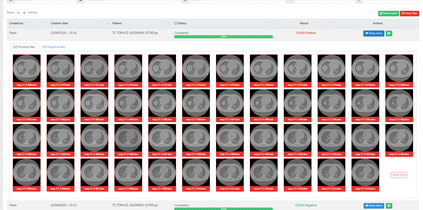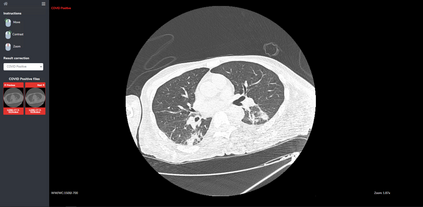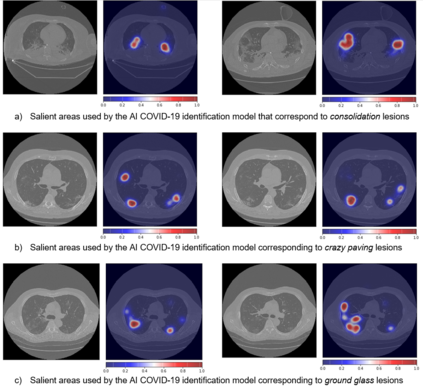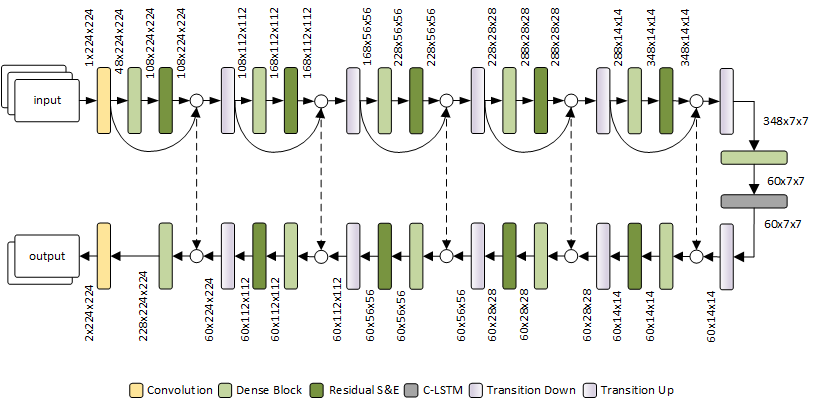COVID-19 infection caused by SARS-CoV-2 pathogen is a catastrophic pandemic outbreak all over the world with exponential increasing of confirmed cases and, unfortunately, deaths. In this work we propose an AI-powered pipeline, based on the deep-learning paradigm, for automated COVID-19 detection and lesion categorization from CT scans. We first propose a new segmentation module aimed at identifying automatically lung parenchyma and lobes. Next, we combined such segmentation network with classification networks for COVID-19 identification and lesion categorization. We compare the obtained classification results with those obtained by three expert radiologists on a dataset consisting of 162 CT scans. Results showed a sensitivity of 90\% and a specificity of 93.5% for COVID-19 detection, outperforming those yielded by the expert radiologists, and an average lesion categorization accuracy of over 84%. Results also show that a significant role is played by prior lung and lobe segmentation that allowed us to enhance performance by over 20 percent points. The interpretation of the trained AI models, moreover, reveals that the most significant areas for supporting the decision on COVID-19 identification are consistent with the lesions clinically associated to the virus, i.e., crazy paving, consolidation and ground glass. This means that the artificial models are able to discriminate a positive patient from a negative one (both controls and patients with interstitial pneumonia tested negative to COVID) by evaluating the presence of those lesions into CT scans. Finally, the AI models are integrated into a user-friendly GUI to support AI explainability for radiologists, which is publicly available at http://perceivelab.com/covid-ai.
翻译:SARS-COV-2病原体造成的COVI-19感染是世界各地灾难性的流行病,其确诊病例和不幸的死亡数量急剧增加。在这项工作中,我们根据深层学习范式,建议采用AI动力管道,进行COVID-19的自动检测和CT扫描中的损伤分类;我们首先提出一个新的分解模块,旨在自动识别肺炎和叶瘤。接着,我们将这种分解网络与COVID-19识别和腐蚀分类分类的分类网络结合起来。我们比较了分类结果与由162个CT扫描组成的数据集的三名专家放射学家获得的分类结果。结果显示,对COVID-19的检测有90%的敏感性和93.5%的特性,高于专家放射学家的检测和84%的平均值。结果还表明,肺部和叶片分解作用很大,使我们能够提高20%以上的性能。经过培训的AI模型还表明,支持CVID-19病人的癌症诊断的最重大领域是综合的。 这些数据显示,在IVD-19的诊断中,通过实验室的临床分析,最终,通过IL-I-CL的诊断方法,可以使IL-I-I-IL-C-I-I-I-I-I-I-I-I-I-I-I-I-I-I-I-I-I-I-I-I-I-I-I-I-I-I-I-I-I-I-I-I-I-I-I-I-I-I-I-I-I-I-I-I-I-I-I-I-I-I-I-I-I-I-I-I-I-I-I-I-I-I-I-I-I-I-I-I-I-I-I-I-I-I-I-I-I-I-I-I-I-I-I-I-I-I-I-I-I-I-I-I-I-I-I-I-I-I-I-I-I-I-I-I-I-I-I-I-I-I-I-I-I-I-I-I-I-I-I-I-I-I-I-I-I-I-I-

